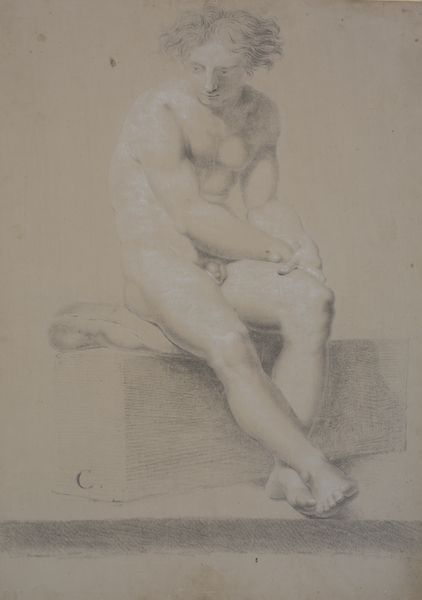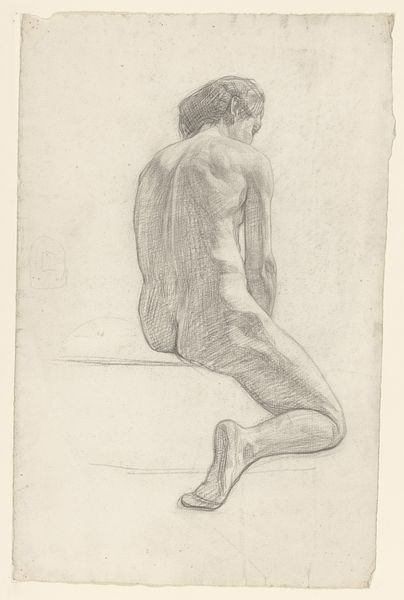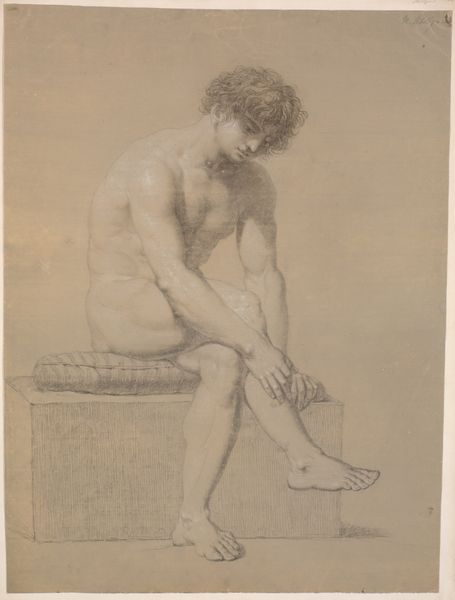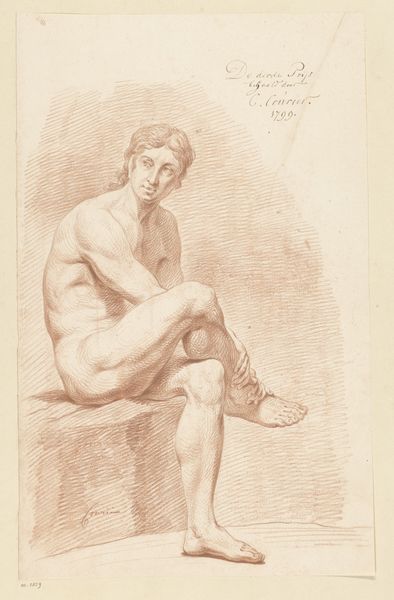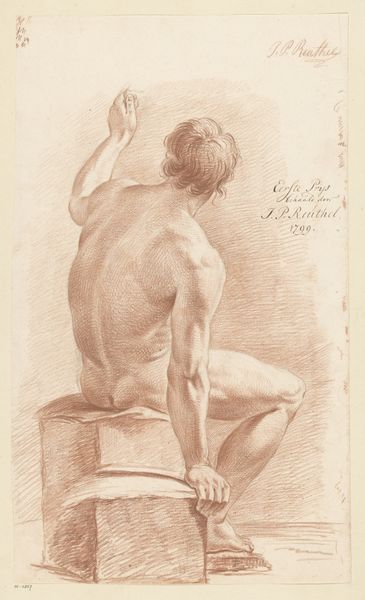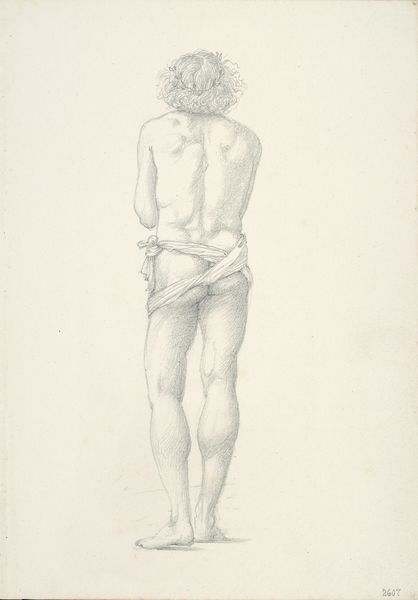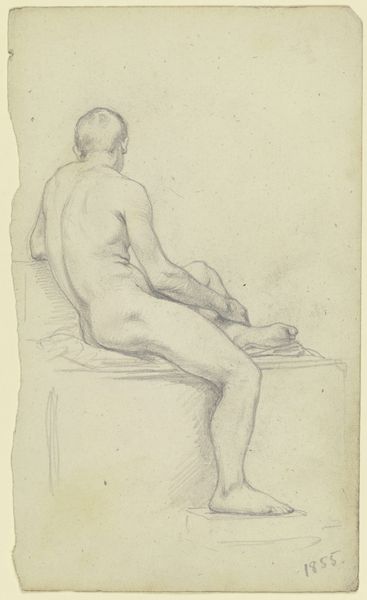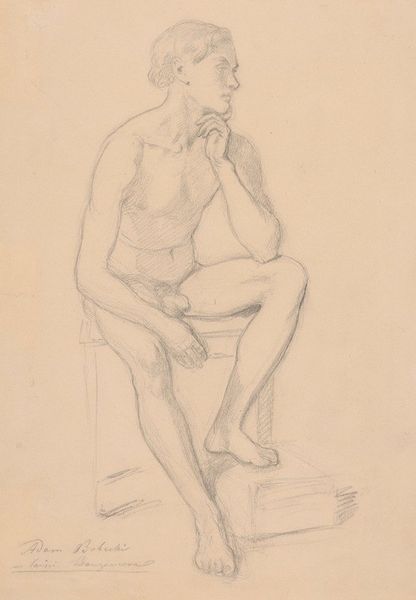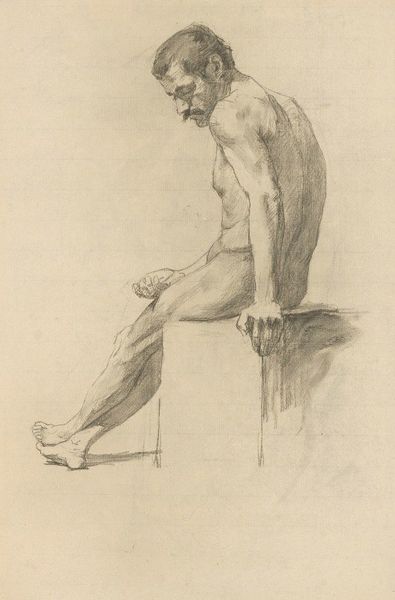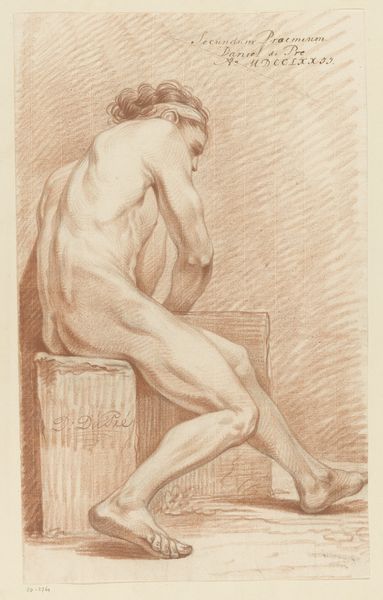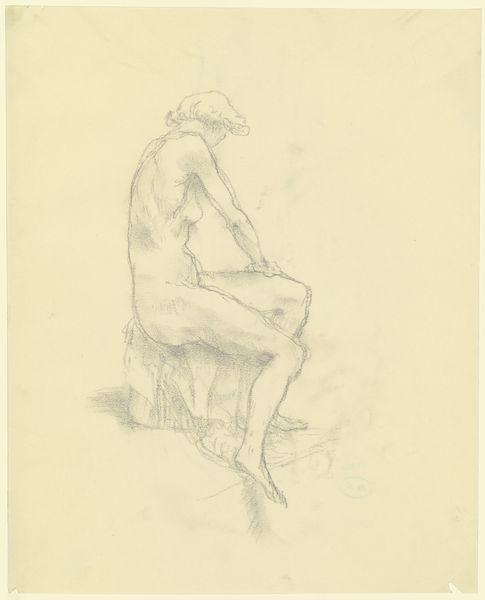
drawing, pencil
#
portrait
#
drawing
#
figuration
#
form
#
pencil drawing
#
pencil
#
line
#
academic-art
#
nude
#
realism
Dimensions: 183 mm (height) x 140 mm (width) (bladmaal)
Curator: This is "Ung, siddende mandlig model," a pencil drawing by Christen Købke, created sometime between 1810 and 1848. It's currently held at the SMK, the National Gallery of Denmark. Editor: The subtle gradation and use of light are what immediately strike me. It feels academic, almost Neoclassical in its precision and calm tonality, despite being a simple sketch. Curator: Indeed. It exemplifies academic art of that era, heavily focused on form and anatomical accuracy. Note the subject, a young male nude, seated. These sorts of drawings were often created for teaching purposes, examining how the play of light hits different angles of the body, but also providing an arena where young male bodies were open to study. Editor: Yes, observe how Købke meticulously renders each muscle, each curve. The contrapposto, though subtle, gives the figure a sense of movement and life. The line quality also deserves mention - how deftly he suggests shadow and volume with minimal strokes. Curator: Considering the social conventions of the time, these life drawings also provided space where discussions of masculinity were implicitly negotiated. There’s labor inherent in both the creation and reception, as the process demands study, material production of the pencil, and even the making of the model's body through work or diet. The viewer plays their part as well, bringing the artist's effort to life. Editor: That reading adds a layer of social context. But formalistically, the lines around the figures contours display very well his understanding of proportion. The soft lines enhance a delicate atmosphere, capturing an evanescent moment of rest. It shows the human form rendered with exacting observation. Curator: It really prompts you to think about how Købke understood not only artistic conventions but how the work would enter the cultural and political fabric around him, influencing views and possibly subverting some of the existing understandings of body or form in this way. Editor: Yes. Ultimately, it’s this fascinating tension—between artistic representation, artistic choices, and perhaps even social reflection, that makes a simple drawing far more captivating.
Comments
No comments
Be the first to comment and join the conversation on the ultimate creative platform.
